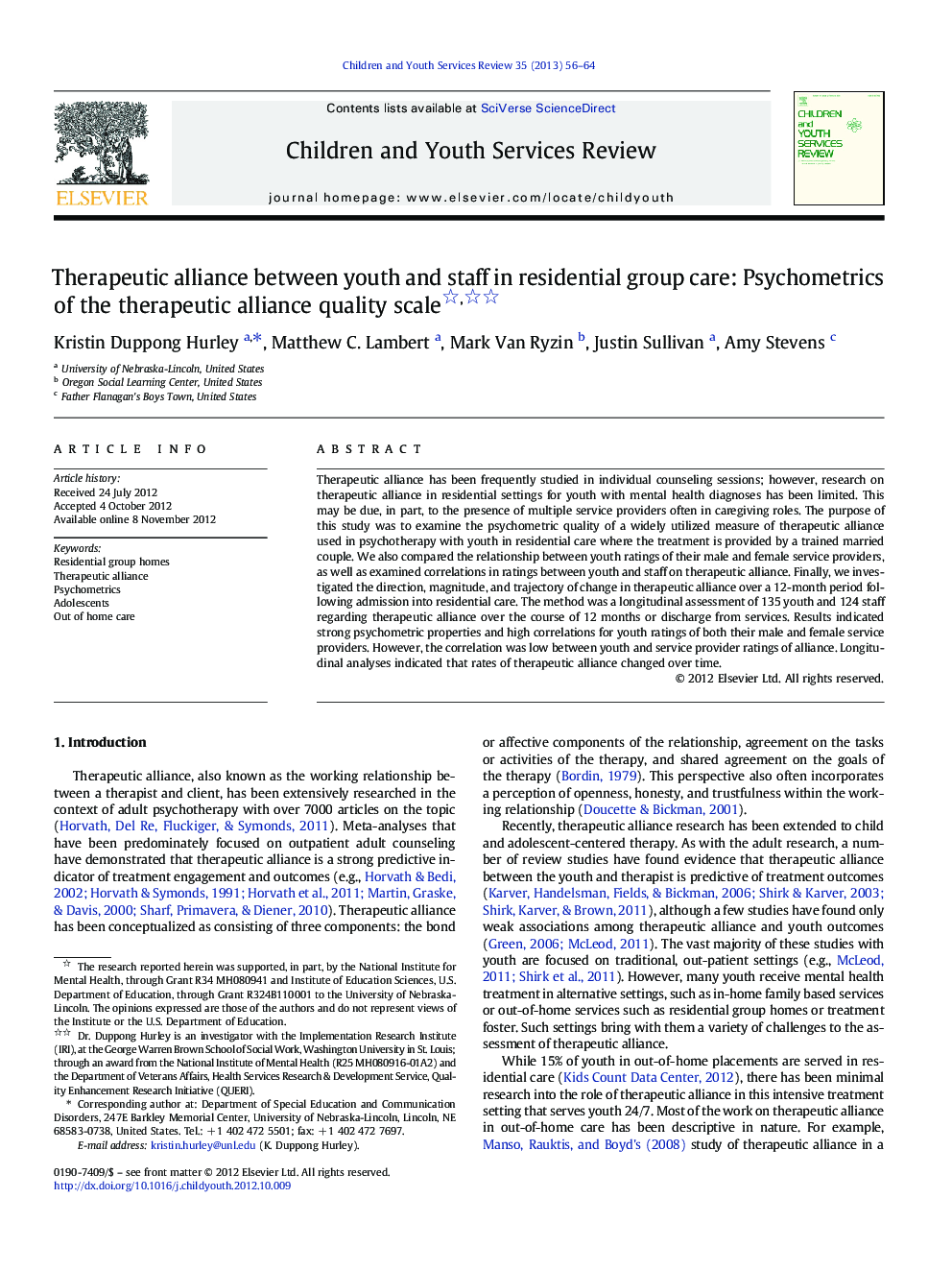| Article ID | Journal | Published Year | Pages | File Type |
|---|---|---|---|---|
| 346614 | Children and Youth Services Review | 2013 | 9 Pages |
Therapeutic alliance has been frequently studied in individual counseling sessions; however, research on therapeutic alliance in residential settings for youth with mental health diagnoses has been limited. This may be due, in part, to the presence of multiple service providers often in caregiving roles. The purpose of this study was to examine the psychometric quality of a widely utilized measure of therapeutic alliance used in psychotherapy with youth in residential care where the treatment is provided by a trained married couple. We also compared the relationship between youth ratings of their male and female service providers, as well as examined correlations in ratings between youth and staff on therapeutic alliance. Finally, we investigated the direction, magnitude, and trajectory of change in therapeutic alliance over a 12-month period following admission into residential care. The method was a longitudinal assessment of 135 youth and 124 staff regarding therapeutic alliance over the course of 12 months or discharge from services. Results indicated strong psychometric properties and high correlations for youth ratings of both their male and female service providers. However, the correlation was low between youth and service provider ratings of alliance. Longitudinal analyses indicated that rates of therapeutic alliance changed over time.
► The TAQS has strong psychometric properties with residential care populations. ► Youth ratings of therapeutic alliance with male and female staff are correlated. ► Youth and staff ratings of therapeutic alliance are only slightly correlated. ► Alliance tended to start high, decline over time, and then slowly rebound. ► Developmental trajectories of alliance differed significantly between youth.
